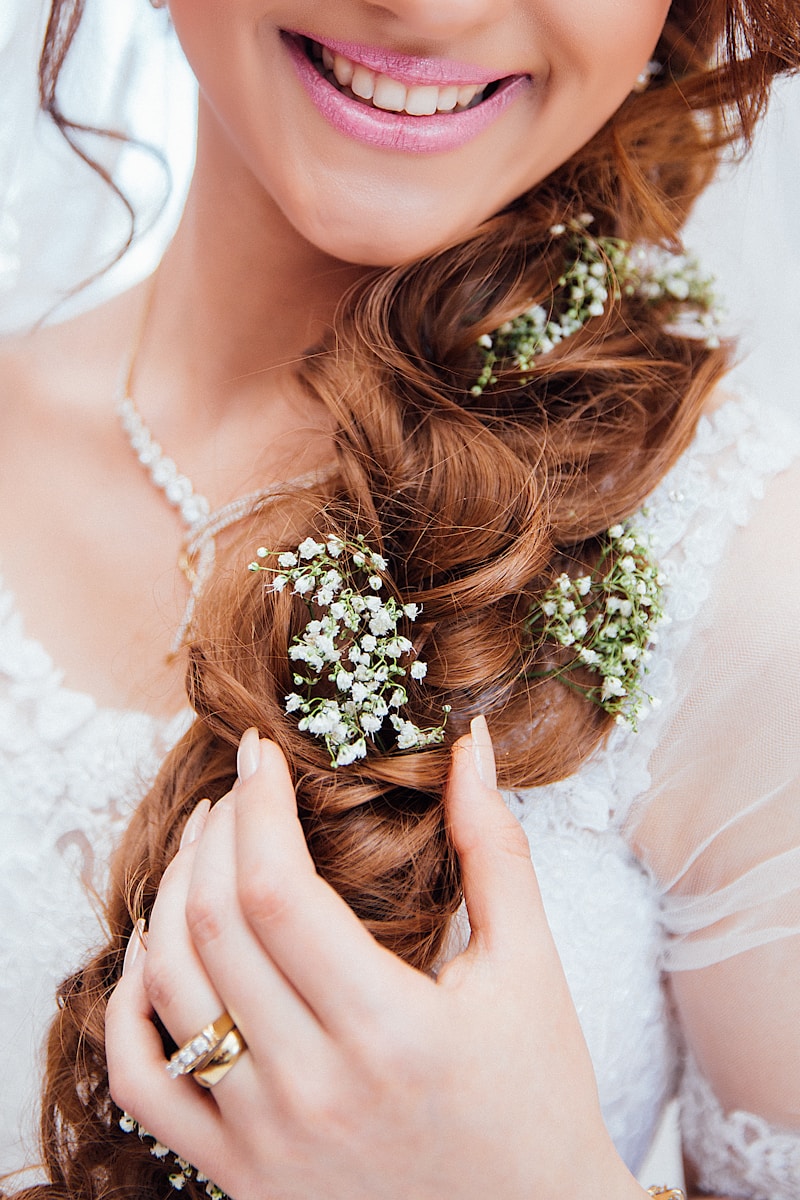The Convergence of Tradition and Modern Bridal Aesthetics: A Harmonious Blend for Today’s Bride
The Convergence of Tradition and Modern Bridal Aesthetics: A Harmonious Blend for Today’s Bride
In recent years, the realm of bridal fashion has witnessed a remarkable transformation, where the convergence of tradition and modern bridal aesthetics takes center stage. This blending of classic and contemporary styles not only reflects the diverse cultural backgrounds of brides but also mirrors changing societal norms and preferences. In this article, we will explore how this fusion manifests in bridal attire, décor, and customs, providing a rich tapestry that caters to the modern bride's desires.
The Evolution of Bridal Fashion
Bridal fashion, steeped in history, has always been about personal expression. Traditionally, brides adorned themselves in gowns that reflected their cultural heritage and societal expectations. Today, however, brides are embracing a mixture of these traditions with modern sensibilities. Let's delve into the key components of this fascinating convergence.
| Traditional Elements | Modern Aesthetics |
| Heirloom fabrics and materials | Sustainable and eco-friendly materials |
| Classic silhouettes | Asymmetrical designs and unique cuts |
| Traditional motifs and embroidery | Minimalistic and abstract designs |
| Cultural rituals and ceremonies | Personalized and non-traditional approaches |
Bridal Attire: A Perfect Blend
When it comes to bridal attire, the merging of traditional and modern aesthetics is evident in various aspects. Many modern brides opt for gowns that incorporate traditional fabrics, such as silk and lace, while embracing contemporary silhouettes. For instance, a classic ball gown can be reimagined with a modern twist by incorporating bold colors or additional layers.

Furthermore, intricate embroidery representing floral or geometric patterns is often paired with minimalist designs. This combination allows brides to maintain a connection to their cultural roots while also embracing modern trends. Designers are increasingly creating collections that reflect this ethos, offering brides the best of both worlds.
Bridal Accessories: The Details Matter
Accessories play a crucial role in completing a bride's look. The convergence of tradition and modern elements extends to veils, jewelry, and footwear. Brides might choose a traditional lace veil that complements a sleek, contemporary dress. Similarly, statement earrings or bold necklaces can add a modern vibe while still paying homage to classic bridal jewelry.
| Traditional Accessories | Modern Adaptations |
| Floral crowns made of fresh flowers | Geometric hairpieces or metallic crowns |
| Classic pearl necklaces | Choker-style necklaces with unique designs |
| Standard white bridal shoes | Colorful or embellished modern footwear |
Bridal Décor: Setting the Scene
Beyond attire, the convergence of tradition and modernity is also visible in bridal décor. Traditional elements, such as floral arrangements and table settings, can be reinterpreted to align with contemporary designs. Many couples choose to infuse their wedding décor with cultural significance while incorporating modern aesthetics. For example, vibrant flowers might be arranged in geometric vases or alongside modern art pieces.
Moreover, wedding venues are also adapting to this trend. While historical churches and grand halls remain popular, many couples are now favoring unique locations, such as art galleries or rooftop gardens, to create a modern setting that still honors tradition. This shift reflects a broader understanding of personal significance in weddings and the desire to create memorable experiences.
Customs and Rituals: A New Approach
The convergence of tradition and modern bridal aesthetics also extends to wedding customs and rituals. Many couples today are opting to include personal elements in their ceremonies, such as promises that reflect their individual beliefs or values, which can be a mix of their cultural heritage and modern ideas of partnership.
For instance, while a couple might participate in a traditional cake cutting ceremony, they may choose to include personalized vows that highlight their love story, or opt for a choreographed first dance that conveys their shared interests. This duality adds depth and meaning to the celebrations.
Understanding Cultural Significance
The blending of traditional and modern bridal aesthetics allows for a more inclusive understanding of cultures worldwide. For example, in South Asia, brides often wear lehengas or sarees rich with embroidery, reflecting their heritage. However, they may also choose to incorporate contemporary cuts or fabrics, like tulle or chiffon, thus bridging tradition with modern aesthetics.
Similarly, in Western cultures, while the white gown is a longstanding tradition, many brides are now favoring colored dresses or non-traditional outfits, which resonate with their personal identities while still adhering to the core concept of bridal beauty.
Final Thoughts: The Balance of Tradition and Modernity
The convergence of tradition and modern bridal aesthetics creates a rich, diverse landscape where brides can express their individuality and heritage. This blend allows for innovation while respecting age-old customs. As the world continues to evolve, so too will bridal fashion, offering an infinite array of options for the modern bride.
Remember, when planning a wedding, it is essential to find the right balance between honoring traditions and embracing modernity. Consider your personal style, cultural background, and the message you wish to convey on your special day. After all, a wedding is a celebration of love, and it deserves to reflect who you are as a couple.
In conclusion, as you embark on your wedding planning journey, keep an open mind regarding traditions and modern trends. Seek inspiration from various cultures, and don't hesitate to create a unique blend that speaks to you. Your wedding day is a canvas, and you are the artist—mix the colors of tradition and modernity to create your masterpiece.
